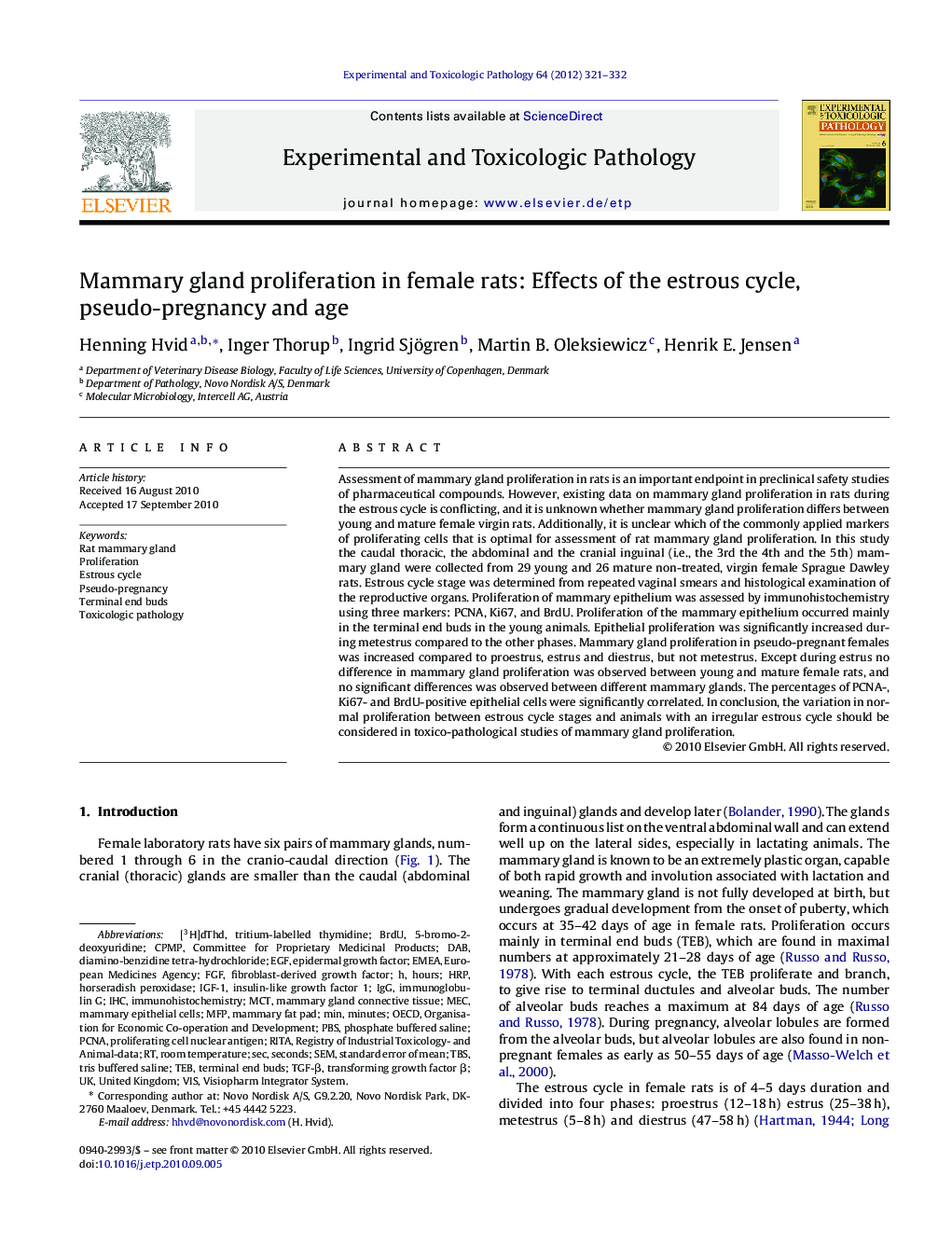| Article ID | Journal | Published Year | Pages | File Type |
|---|---|---|---|---|
| 2498991 | Experimental and Toxicologic Pathology | 2012 | 12 Pages |
Assessment of mammary gland proliferation in rats is an important endpoint in preclinical safety studies of pharmaceutical compounds. However, existing data on mammary gland proliferation in rats during the estrous cycle is conflicting, and it is unknown whether mammary gland proliferation differs between young and mature female virgin rats. Additionally, it is unclear which of the commonly applied markers of proliferating cells that is optimal for assessment of rat mammary gland proliferation. In this study the caudal thoracic, the abdominal and the cranial inguinal (i.e., the 3rd the 4th and the 5th) mammary gland were collected from 29 young and 26 mature non-treated, virgin female Sprague Dawley rats. Estrous cycle stage was determined from repeated vaginal smears and histological examination of the reproductive organs. Proliferation of mammary epithelium was assessed by immunohistochemistry using three markers: PCNA, Ki67, and BrdU. Proliferation of the mammary epithelium occurred mainly in the terminal end buds in the young animals. Epithelial proliferation was significantly increased during metestrus compared to the other phases. Mammary gland proliferation in pseudo-pregnant females was increased compared to proestrus, estrus and diestrus, but not metestrus. Except during estrus no difference in mammary gland proliferation was observed between young and mature female rats, and no significant differences was observed between different mammary glands. The percentages of PCNA-, Ki67- and BrdU-positive epithelial cells were significantly correlated. In conclusion, the variation in normal proliferation between estrous cycle stages and animals with an irregular estrous cycle should be considered in toxico-pathological studies of mammary gland proliferation.
